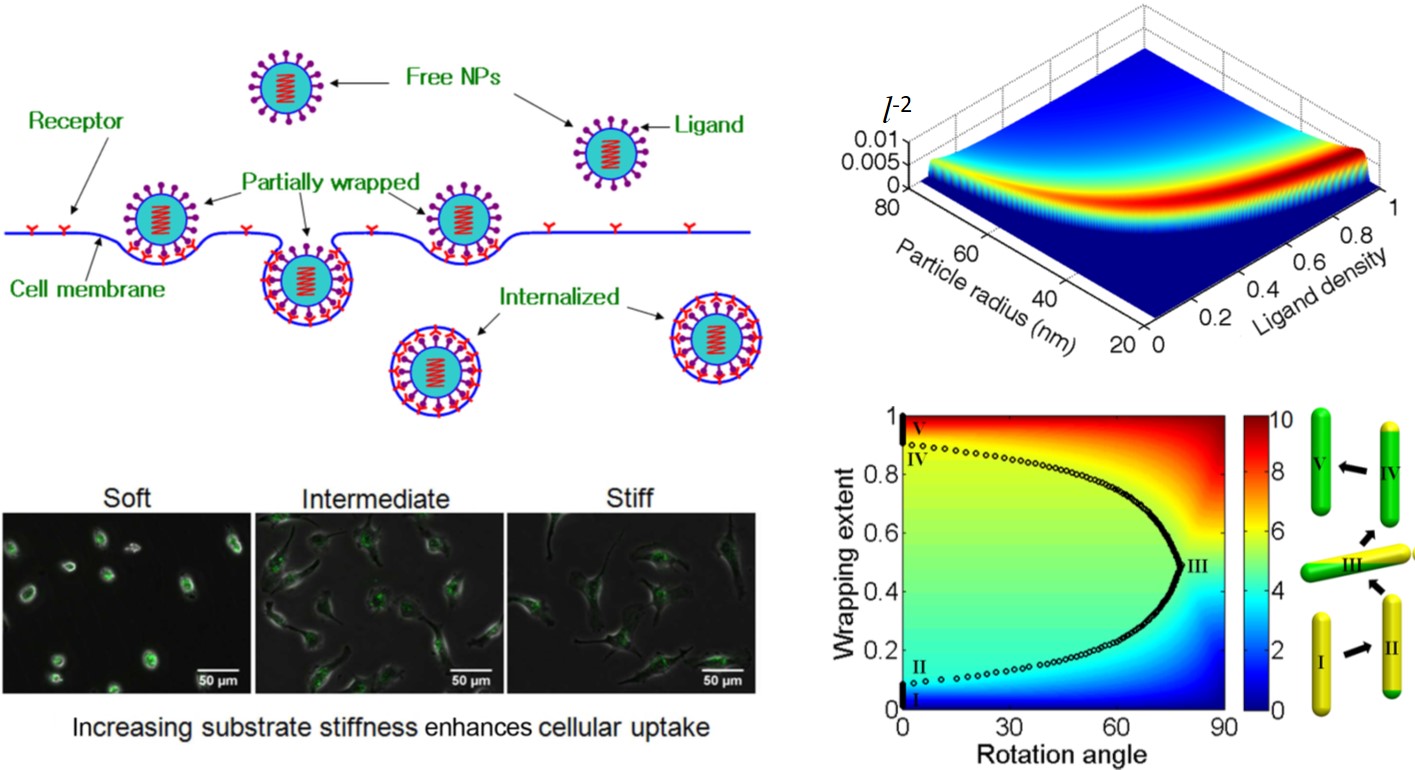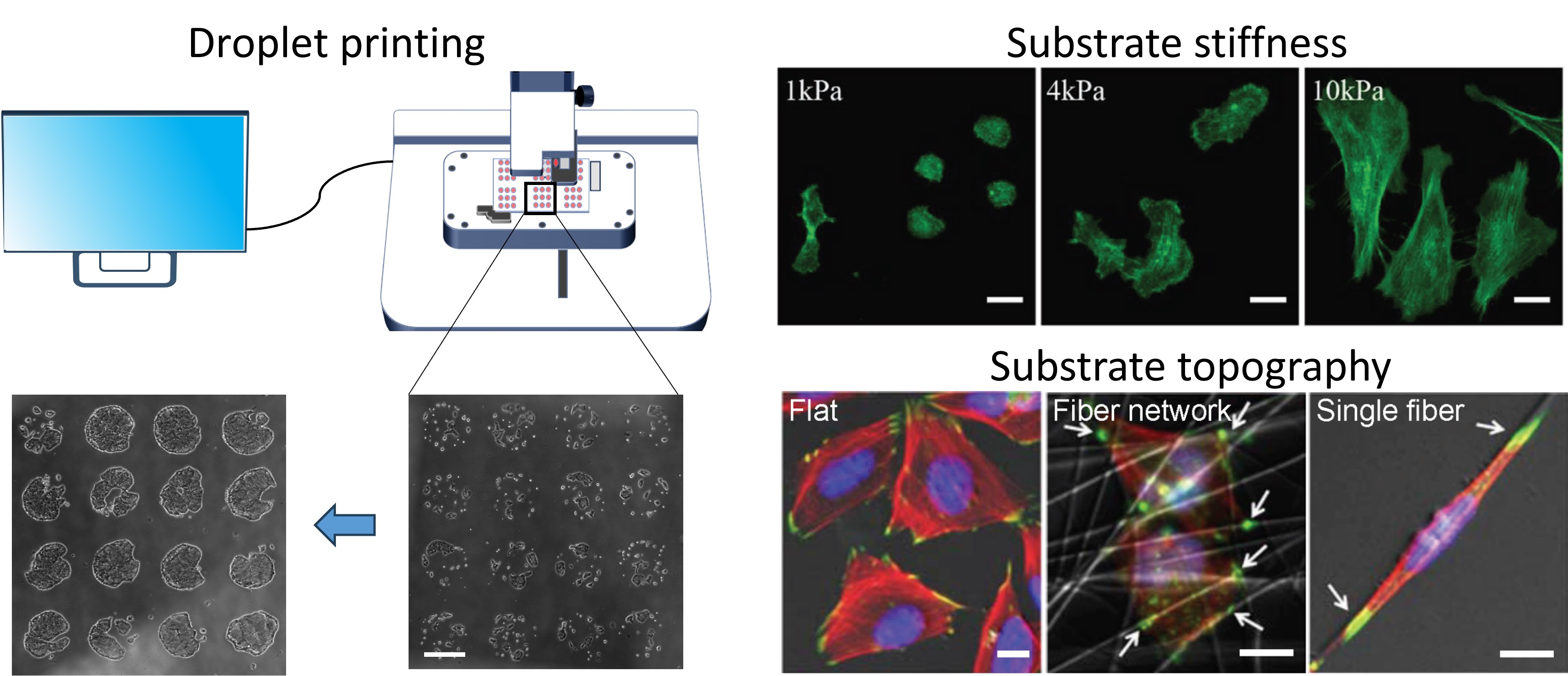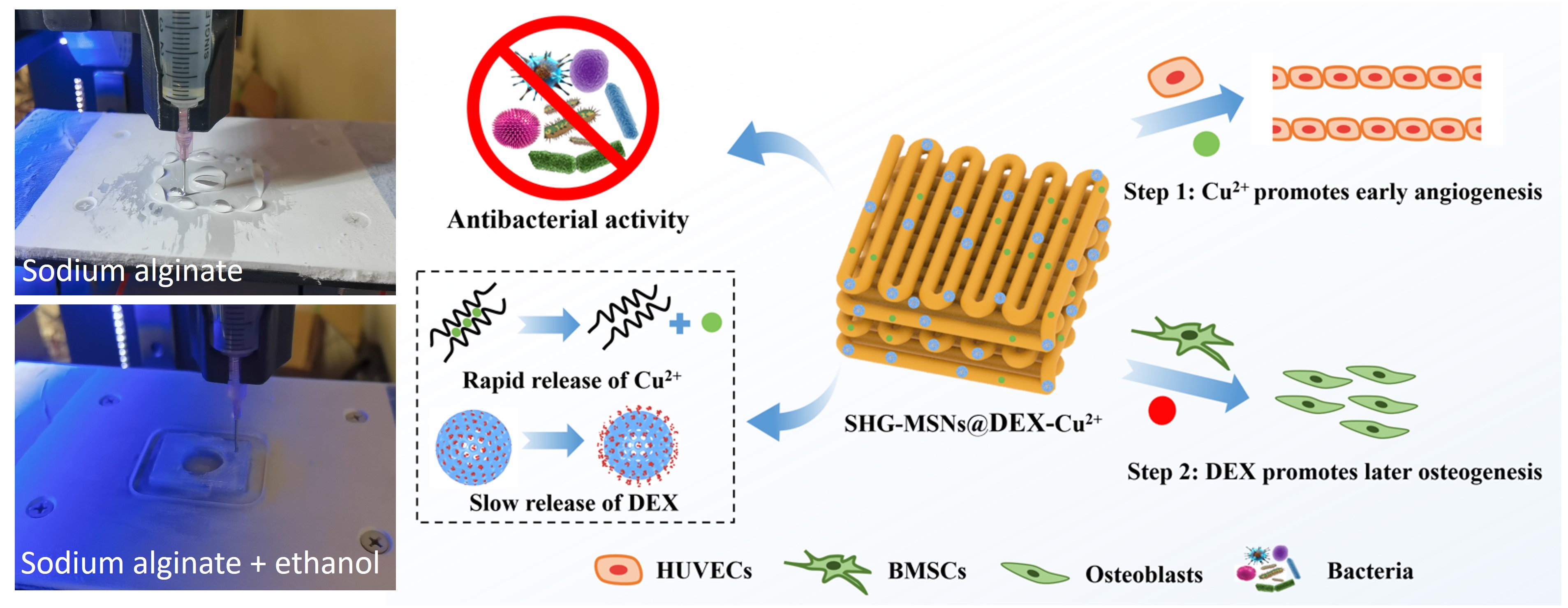|
|
C.J. Huang Research GroupMechanics & Manufacturing of Soft and Living Systems |
Membrane Mechanics
Membrane structures are ubiquitous in biological systems and essential to the normal functions of cells and subcellular organelles. They are dynamic structures that may continuously evolve to have different lipid compositions and/or structures in response to pathological and environmenal stresses. Therefore, they are potential therapeutic and diagnostic targets. Our interests in membrane mechanics lie in the following aspects:
- Investigate the influence of various factors, such as chemical composition, curvature, environmental stress, etc., on the structure and mechanical properties of lipid membranes
- Understand how mechanics controls membrane-mediated processes at the microscopic level, such as phase separation, vesicle shape transformation, lipid and protien sorting, etc.
- Identify the correlation between bio-chemo-mechanical properties of biological membranes and disease conditions (e.g. malaria, hypoxia, etc.)

Transport at Bio-interfaces
Bio-interfaces define the boundary where biological systems interact with their surroundings, which can include other biological components, synthetic materials, or external stimuli. These interfaces play a crucial role in various biological and biomedical processes, such as cell signaling, molecular transport, and drug delivery. We are currently interested in transport problems at the following three bio-interfaces:
- Understand how the biophysical and chemical properties of various nanomaterials (e.g., nanoparticles, nanoliposomes, antimicrobial/antiviral peptides, etc.) affect their interaction with biological membranes
- Investigate the transport of skin-targeting molecules through different skin layers
- Investigate the interaction of chemical actives with the outlayer of hair cuticles

Biofabrication and Mechanobiology
The biological complexity and high cost of animal models have made it a routine for biologists, pathologists and pharmacologists to test their hypotheses using simplified in vitro systems where, historically, cells are cultured on two-dimensional (2D) flat, rigid surfaces (e.g.petri dishes, flasks, glass coverslips, etc.). However, studies in the last two decades have clearly demonstrated that cells are able to actively probe their surroundings through multiple mechanotransduction signaling pathways. More physiologically relevant in vitro models more accurately replicate the cellular environment in vivo and offer more reliable insights into disease progression and treatment efficacy. Our interests in biofabrication and mechanobiology lie in the following aspects:
- Develop novel systems using advanced technologies (e.g., microfabrication, inkjet printing, 3D printing, etc.) to manipulate cell behavior or interrogate the mechanobiology of cells
- Identify the underlying principles that govern the mechanical states and behavior of cells

Mechanics and manufacturing of soft structures
Soft structures play a crucial role in tissue engineering due to their tunable mechanical properties and ability to mimic natural tissues. They can serve as scaffolds for cell growth, enabling the development of functional tissues and organoids. Their adaptability also extends to a wide range of other fields, such as biomedical devices, soft robotics, and flexible electronics, where they provide mechanical compliance to enhance interaction with biological systems. Our interests in this area lie in the following aspects:
- Understand the deforamtion and instabilities (e.g., wrinkling, folding, creasing, etc.) of various polymer materials (e.g., hydrogel, elastomer, polymer composites)
- Develop innovative solutions to enhancing the manufacturing processes of various polymer materials
- Introduce innovative functionalities to soft structures (e.g., shape-morphing, self-healing, sensing, bio-active, etc.)
